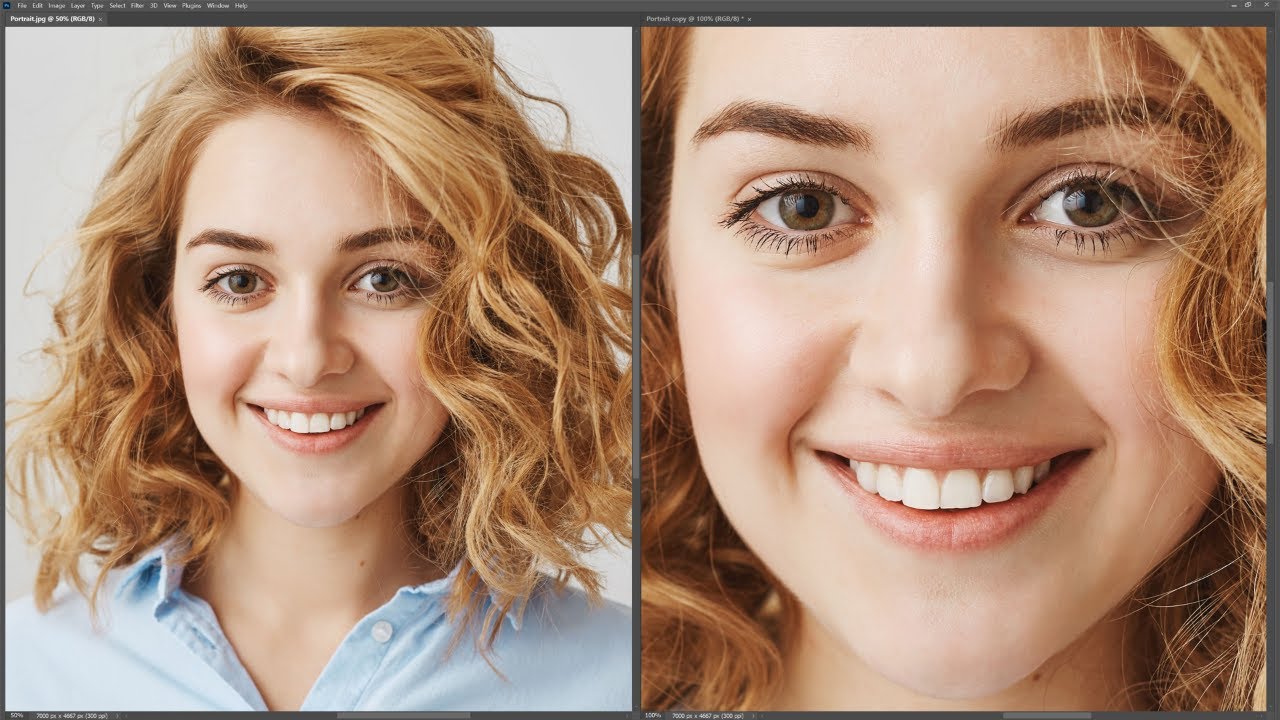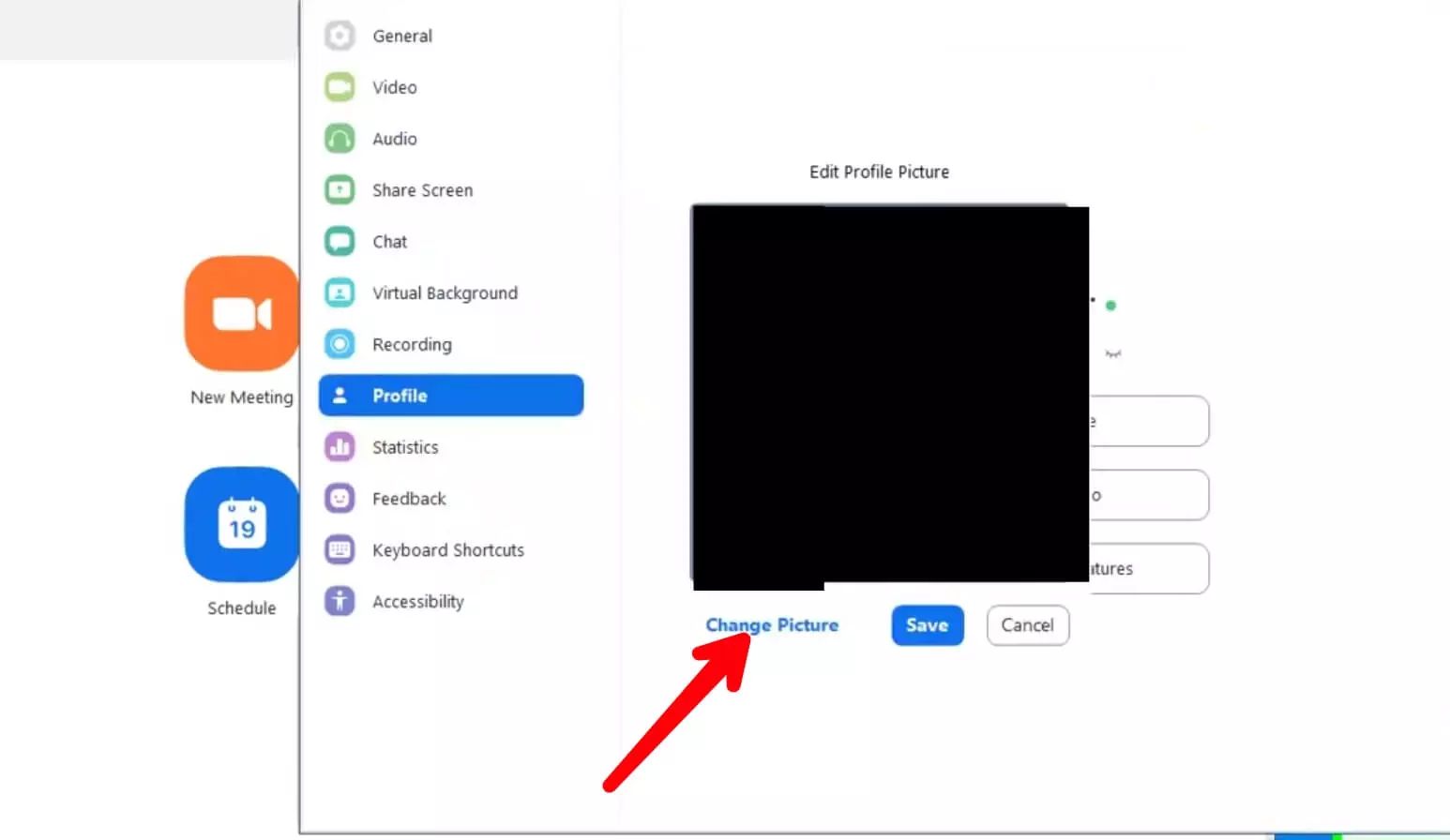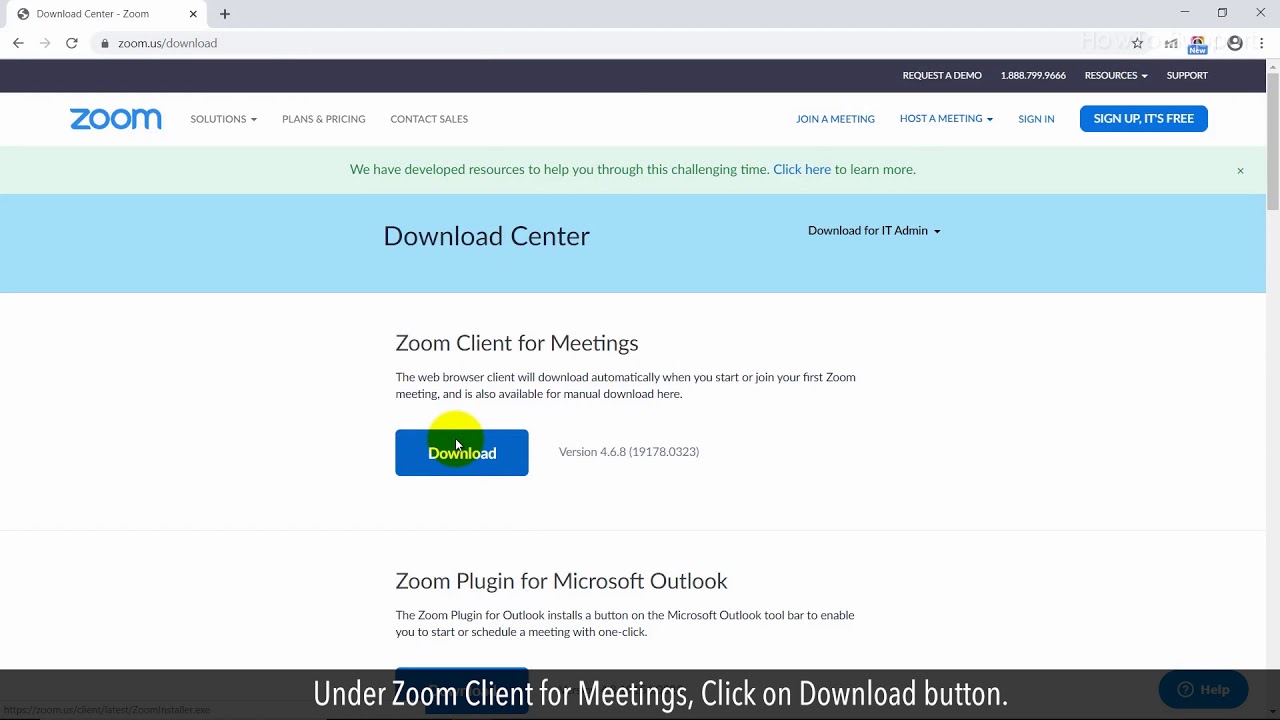Introduction
Welcome to the world of creative photography! Whether you’re a professional photographer or simply enjoy capturing moments with your camera, you may come across situations where you wish you had captured a wider view or zoomed out on a picture after it was taken. While it may seem like an impossible task, fear not! In this article, we will explore various techniques to help you zoom out on a picture already taken.
The ability to zoom out on a picture can be useful in a variety of scenarios. Perhaps you want to include more of the scenery in a landscape shot, or you want to capture a group of people in a single frame. Whatever the reason may be, there are several options available to achieve the zoom out effect.
In the following sections, we’ll discuss different methods to accomplish this. From using photo editing software to online image resizing tools, cropping the image, or changing the aspect ratio, there’s a solution for every situation. By the end of this article, you’ll have a clear understanding of how to apply these techniques effectively and creatively.
So, let’s dive in and explore the world of zooming out on a picture already taken!
Understanding the Zoom Out Effect
The zoom out effect refers to the process of making a picture appear as if it was captured from a wider perspective, revealing more of the surrounding scene. It creates the illusion of a wider field of view, allowing viewers to take in more details and context.
When we zoom out on a picture, we essentially increase the visible area around the subject, giving it a greater sense of space. This effect can be achieved in various ways, depending on the tools and techniques available to you.
One common misconception is that the zoom out effect can only be achieved by physically zooming out while taking the picture. While this is true to some extent, it is not the only option. The zoom out effect can also be achieved after the picture has been taken, using various post-processing methods.
Understanding the zoom out effect is crucial because it allows you to visualize the final outcome and plan your photography accordingly. By keeping in mind how the picture will be zoomed out, you can compose your shots and select the appropriate settings to capture the desired level of detail.
Additionally, understanding the zoom out effect enables you to appreciate its impact on storytelling and visual communication. By revealing more of the surrounding scene, the zoom out effect can provide valuable context, create a sense of openness, and enhance the overall narrative of the image.
Now that we have a solid understanding of what the zoom out effect entails and its significance, let’s explore the different methods you can use to achieve this effect. From utilizing photo editing software to resizing tools, cropping, and changing the aspect ratio, we’ll cover all the techniques you need to know to effectively zoom out on a picture already taken.
Option 1: Using Photo Editing Software
One of the most versatile ways to achieve the zoom out effect on a picture already taken is by utilizing photo editing software. With these powerful tools, you have precise control over the editing process and can achieve the desired level of zoom out effect.
The first step is to choose a reliable and user-friendly photo editing software. Popular options include Adobe Photoshop, GIMP, and Lightroom, among others. Once you have selected your preferred software, follow these steps:
- Open the image in the editing software.
- Select the appropriate zoom or resize tool.
- Adjust the settings to increase the visible area around the subject.
- Preview the changes and make further adjustments if necessary.
- Save the edited image.
During the editing process, you can experiment with different zoom levels and aspect ratios to achieve the desired effect. Keep in mind that this method may result in some loss of image quality, especially if you need to significantly zoom out. However, with high-quality images and careful editing, you can minimize any noticeable degradation.
Another advantage of using photo editing software is the availability of additional editing tools. You can enhance the overall image quality, adjust the brightness and contrast, apply filters, or even remove unwanted elements from the frame. These tools allow you to transform the image beyond just zooming out, giving you more creative freedom and flexibility.
Remember, using photo editing software requires some technical knowledge and experience. It may take time to familiarize yourself with the software and understand its capabilities. However, investing time and effort into learning these tools will enable you to unlock a world of possibilities for enhancing and zooming out on your pictures.
Now that we have explored the first option of using photo editing software, let’s move on to the next method: using online image resizing tools.
Option 2: Using Online Image Resizing Tools
If you don’t have access to photo editing software or prefer a more convenient and accessible solution, using online image resizing tools is a great option to achieve the zoom out effect on a picture already taken. These tools are typically web-based and offer a user-friendly interface to resize and modify your images.
Here’s how you can use online image resizing tools:
- Search for a reputable online image resizing tool, such as Pixlr, PicResize, or ResizeImage.net.
- Upload your image to the tool’s website.
- Specify the desired dimensions or aspect ratio to achieve the zoom out effect.
- Apply the changes and preview the resized image.
- Download the modified image to your computer or device.
Online image resizing tools often offer a range of options to customize the resizing process. You can choose specific dimensions, aspect ratios, or even select predefined templates for different social media platforms or printing sizes. This allows you to easily optimize your images for various purposes while achieving the desired zoom out effect.
While online image resizing tools are convenient and straightforward to use, keep in mind that the level of control and flexibility may be slightly limited compared to dedicated photo editing software. Additionally, the image quality may be affected to some extent, depending on the tool and settings used.
It’s also worth noting that some online image resizing tools may have file size limitations or may require you to create an account for accessing advanced features. Therefore, it’s essential to research and choose a reliable tool that suits your requirements and preferences.
Using online image resizing tools can be a quick and efficient way to achieve the zoom out effect without the need for complex software installations. Now that we have covered this option, let’s explore another method: cropping the image.
Option 3: Cropping the Image
Cropping the image is another effective method to achieve the zoom out effect on a picture already taken. This technique involves trimming or removing parts of the image to create a wider field of view, giving the impression of zooming out.
Follow these steps to crop the image:
- Open the image in a photo editing software or online image editor.
- Select the crop tool.
- Adjust the crop boundaries to include more of the surrounding scene.
- Preview the cropped image and make any necessary adjustments.
- Save the cropped image.
When cropping the image, it’s important to maintain a balanced composition and preserve the visual coherence of the photo. Consider the rule of thirds and ensure that the subject remains the focal point, even after cropping. Experiment with different crop ratios to find the one that best achieves the desired zoom out effect.
Cropping the image offers a level of control and precision in achieving the zoom out effect. However, it’s worth noting that cropping may result in a loss of resolution and image quality, especially if significant amounts of the image are removed. Therefore, it’s important to start with high-resolution images to preserve as much detail as possible.
Furthermore, keep in mind that cropping is a permanent alteration to the image. It’s advisable to work on a copy of the original image or use non-destructive editing techniques to retain the option of reverting back to the original composition if needed.
By cropping the image strategically, you can create a sense of depth and expand the viewer’s perspective. This technique can be particularly effective when you want to emphasize the subject within a larger context or showcase the surrounding environment.
Now that we have explored the technique of cropping the image, let’s move on to the next option: changing the aspect ratio.
Option 4: Changing the Aspect Ratio
Changing the aspect ratio of an image is another method to achieve the zoom out effect on a picture already taken. This technique involves altering the width and height proportions of the image, effectively expanding the visible area and creating a wider field of view.
Here’s how you can change the aspect ratio:
- Open the image in a photo editing software or online image editor.
- Select the tool or option to adjust the aspect ratio.
- Input the desired width and height values to create a wider proportion.
- Resize the image while maintaining the new aspect ratio.
- Preview the changes and make any necessary adjustments.
- Save the modified image.
Changing the aspect ratio can be particularly useful when you want to introduce a panoramic feel to the image or emphasize the extended width of the scene. By increasing the width proportionately, you create a sense of expansiveness, allowing viewers to take in more of the surrounding environment.
It’s important to note that changing the aspect ratio may result in some loss of image quality, especially if the image needs to be significantly resized. Therefore, it’s advisable to start with high-resolution images or work on a copy of the original to minimize any noticeable degradation.
Addtionally, keep in mind that altering the aspect ratio may require some adjustments to the composition and framing. It’s essential to consider how the change in proportions impacts the overall visual balance of the image and ensure that the subject remains the focal point.
Changing the aspect ratio offers a flexible and creative way to achieve the zoom out effect without extensively cropping or editing the image. By expanding the width of the image, you can provide a wider view of the scene and immerse viewers in the captured moment.
Now that we have covered the technique of changing the aspect ratio, let’s move on to some tips for zooming out effectively.
Tips for Zooming Out Effectively
When it comes to zooming out on a picture already taken, there are a few tips and considerations that can help you achieve the desired effect effectively. Let’s explore some of these tips:
- Plan ahead: Before capturing the image, consider the desired zoom out effect. Visualize the final composition and determine how much of the surrounding scene you want to include.
- Composition is key: Pay attention to the composition of the image, even when zooming out. Ensure that the subject remains the focal point and that the wider view maintains visual balance.
- High-resolution images: Use high-resolution images whenever possible. This allows for better quality when zooming out and minimizes potential loss of detail.
- Experiment with different methods: Don’t be afraid to try different techniques, such as cropping, changing the aspect ratio, or using photo editing software. Each method offers unique possibilities, so explore and see which one works best for your particular image.
- Focus on storytelling: Consider the narrative of your image and how the zoom out effect contributes to the story. Use the expanded visual environment to create a deeper connection between the subject and its surroundings.
- Keep it natural: Make sure the zoom out effect looks natural and not forced. Avoid excessive manipulation or over-resizing, as it may result in an unrealistic appearance.
- Take advantage of post-processing tools: Whether it’s adjusting brightness, contrast, or colors, utilizing post-processing tools can enhance the zoom out effect and overall visual impact of the image. Experiment with different editing techniques to amplify the desired zoom out effect.
By following these tips, you can effectively achieve the zoom out effect and captivate viewers with a wider perspective and sense of depth. Remember, practice and creativity are key to mastering this technique and developing your own unique style of zooming out on pictures already taken.
Now that we have explored these helpful tips, you are equipped with the knowledge and techniques to zoom out on your pictures effectively. So, grab your camera, capture those amazing shots, and let your creativity unfold!
Conclusion
Zooming out on a picture already taken may seem like a daunting task, but with the right techniques and tools, it becomes an achievable artistic endeavor. In this article, we have explored various options for achieving the zoom out effect – using photo editing software, online image resizing tools, cropping, and changing the aspect ratio.
By using photo editing software, you have precise control over the editing process and can achieve the desired level of zoom out effect. Online image resizing tools provide convenience and accessibility, allowing you to resize your images with ease. Cropping the image strategically can create a sense of depth and expand the viewer’s perspective. Changing the aspect ratio offers a flexible way to introduce a wider view of the scene.
Through all these techniques, it is important to maintain a balanced composition, preserve image quality, and keep the focus on storytelling. By planning ahead, using high-resolution images, and experimenting with different methods, you can effectively achieve the zoom out effect and create captivating visuals.
Remember to consider the narrative of your image and unleash your creativity by utilizing post-processing tools to enhance the overall impact of the zoom out effect.
Now that you have a firm grasp of the techniques and tips mentioned in this article, it’s time to apply them in your photography journey. Explore, experiment, and let your artistic vision come to life. Capture moments that tell stories and take your viewers on a visual journey that goes beyond just a single frame.
So, grab your camera and embrace the art of zooming out on pictures already taken. Watch as your images transform, immersing viewers in a wider perspective and opening up new possibilities for storytelling through photography.

























